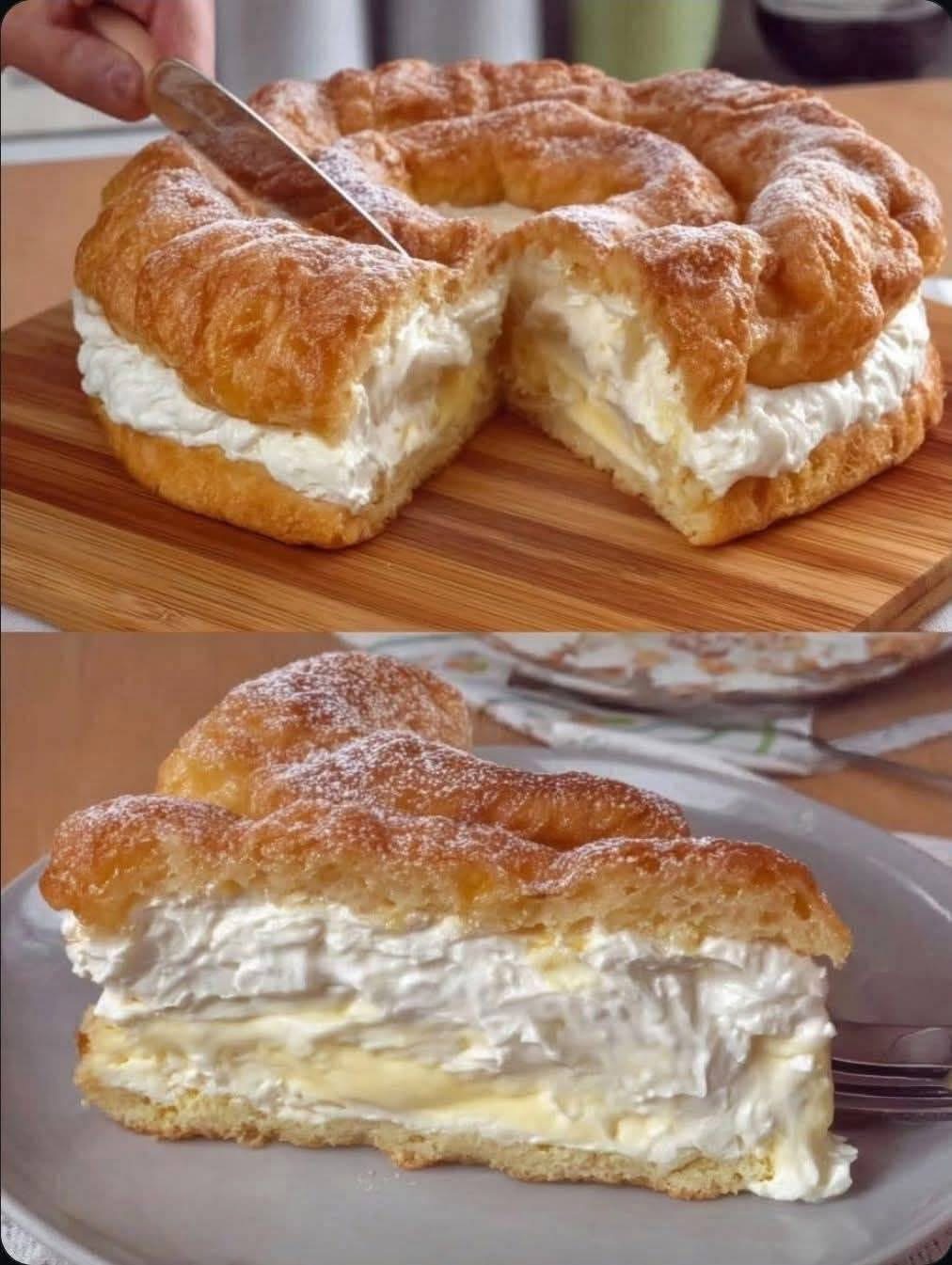Of course! “Cream Cheese Cake” can refer to two iconic desserts: the dense, rich New York-Style Cheesecake and the lighter, layered Cream Cheese Pound Cake. I’ll provide a master recipe for the most common interpretation—classic cheesecake—and then briefly describe the pound cake variation.
—
1. Classic New York-Style Cheesecake
This is the ultimate creamy, dense, and rich cheesecake with a tangy cream cheese flavor. The key to success is using room temperature ingredients and not overmixing.
Ingredients
For the Graham Cracker Crust:
· 1 ½ cups (150g) graham cracker crumbs
· ⅓ cup (65g) granulated sugar
· 6 tbsp (85g) unsalted butter, melted
· Pinch of salt
For the Cheesecake Filling:
· 4 packages (32 oz / 904g) full-fat cream cheese, softened to room temperature
· 1 cup (200g) granulated sugar
· 1 cup (240g) sour cream or full-fat Greek yogurt, at room temperature
· 1 tsp vanilla extract
· 2 tsp lemon juice (optional, enhances flavor)
· 3 large eggs + 1 egg yolk, at room temperature
Instructions
1. Prepare the Crust:
· Preheat oven to 325°F (160°C).
· Mix the graham cracker crumbs, sugar, and melted butter until combined.
· Press the mixture firmly into the bottom and slightly up the sides of a 9-inch springform pan.
· Bake for 10 minutes, then set aside to cool. Reduce oven temperature to 300°F (150°C).
2. Make the Filling:
· In a large bowl, beat the softened cream cheese with an electric mixer on medium speed until it is completely smooth and creamy (about 2-3 minutes). Scrape down the bowl often.
· Add the sugar and beat until combined.
· Beat in the sour cream (or yogurt), vanilla extract, and lemon juice until just combined.
· On low speed, add the eggs and egg yolk one at a time, mixing until just incorporated after each addition. Do not overmix once the eggs are added, as this incorporates too much air and can cause cracking.
· Pour the filling over the cooled crust and smooth the top.
3. Bake (Water Bath Method Recommended for No Cracks):
· To prevent cracks: Wrap the bottom and sides of the springform pan tightly with heavy-duty aluminum foil to make it waterproof. Place the pan in a large roasting pan and pour boiling water into the roasting pan until it comes about halfway up the sides of the springform pan.
· Bake at 300°F (150°C) for 55-70 minutes. The edges will look set, but the center will still have a slight jiggle when you gently shake the pan.
· Turn off the oven, crack the oven door open, and let the cheesecake cool inside for 1 hour. This gradual cooling is the best defense against cracking.
4. Chill:
· Remove the cheesecake from the water bath and run a thin knife around the edge to loosen it from the pan (this also helps prevent cracking as it contracts while cooling).
· Let it cool to room temperature on a wire rack, then cover and refrigerate for at least 8 hours, preferably 24 hours, before serving.
—
2. Cream Cheese Pound Cake Variation
This is a dense, moist, and velvety cake where cream cheese replaces some of the butter for incredible richness and a tender crumb.
Basic Ingredients:
· 1 ½ cups (3 sticks / 340g) unsalted butter, softened
· 1 package (8 oz / 226g) cream cheese, softened
· 3 cups (600g) granulated sugar
· 6 large eggs, at room temperature
· 3 cups (360g) all-purpose flour
· 1 tsp vanilla extract
· ½ tsp salt
Method:
1. Preheat oven to 325°F (165°C). Grease and flour a 10-inch Bundt or tube pan.
2. In a large bowl, cream the butter, cream cheese, and sugar together until light and fluffy (about 5-7 minutes).
3. Add the eggs one at a time, beating well after each addition.
4. Gradually mix in the flour and salt until just combined. Stir in the vanilla.
5. Pour the batter into the prepared pan and bake for 1 hour 15 minutes to 1 hour 30 minutes, or until a long skewer inserted into the center comes out clean.
6. Cool in the pan for 15 minutes before inverting onto a wire rack to cool completely.
—
Pro Tips for the Perfect Cheesecake:
· Room Temperature is NON-NEGOTIABLE: This is the single most important step. Cold cream cheese will leave lumps in your batter, and cold eggs can cause overmixing and lead to cracking.
· Don’t Overmix: Once you add the eggs, mix on low speed until just combined. Overmixing incorporates air bubbles, which expand and collapse during baking, causing cracks.
· The Water Bath: This creates a steamy environment for gentle, even cooking. It’s the best way to achieve a creamy texture and crack-free top.
· Patience is a Virtue: The long chilling time allows the flavors to meld and the texture to firm up perfectly. Do not skip it!
Enjoy your decadent, homemade cream cheese cake
